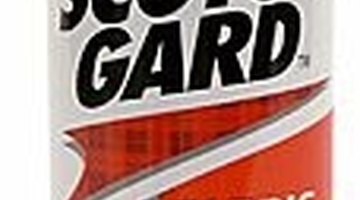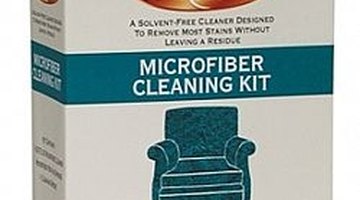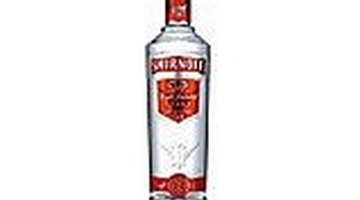How to Care for Microfiber Furniture
Microfiber is a soft, suede-like material that is used for everything from comforters to cleaning aids. One of the most trendy applications for microfiber is furniture. Although a popular choice, caring for your microfiber furniture can create some challenges.

In this article, you will find steps to keep your furniture looking 'good as new!'
Things You Will Need
- Vacuum
- Towels or Paper Towels
- Rubbing Alcohol or a Clear Liquor
- Hair dryer
- Fabric Protectant
Tip
Maintain your newly treated furniture with consistent vacuuming and by attending to spills as soon as possible. Re-apply protectant periodically as it will eventually wear off. Refer to your protectant manufacturer's suggestions for reapplication timelines. Always use a blotting or dabbing motion when treating spills.
Warning
Always test all cleaning agents in an inconspicuous spot. Keep all cleaning products away from children and pets Use caution when using cleaning products as they can often be skin or eye irritants. Protect yourself with gloves and goggles, if necessary. Never use a scrub brush on microfiber. This will only push a stain further in and can damage your furniture's fiber. Rejoice! No elbow grease needed!
-
The most important step in caring for your microfiber furniture usually takes place before you even bring it home. A fabric protectant (like Scotchgard) helps your furniture resist the strain of everyday use and is well worth the extra money. It acts as a repellant (like wax acts on your vehicle) causing liquids to bead and solid debris to remain on the surface instead of being ground in. Your furniture salesperson will generally offer this service at the time of purchase. The following steps will help you maintain (or, if you have an existing piece, restore)the appearance of your investment.
-
Vacuum your furniture often to remove the dirt and dust that can settle from the air. Removing this debris will ensure that it is not ground in to the fabric. This will also lift the fibers to give your furniture a softer appearance.
-
Treat spills as soon as they happen. Microfiber is repellant by nature; especially if it has been treated with a protectant. This means that most spills will bead, buying you time to treat the area before a liquid is absorbed. Use a towel or paper towel to soak up any excess liquid. Be careful not to rub the area as this can push the substance into the fibers, thus causing a stain. Instead, dab the spot until it is only damp.
-
Of course, not all spills can be treated immediately which can lead to stains or 'rings' on your furniture. In this case, you'll need the help of a cleaning agent. (Check the 'resource' section for some online retailers who sell these products.) Locate a tag on your furniture and look for the following codes:
-
'W'- this means you'll need a water based cleaner 'S'- this means you'll need a solvent based cleaner 'S or W' - this means you can use either choice
-
Once you have chosen an appropriate cleaner, follow the directions of the manufacturer. (Each product has it's own specific directions.) After treating the spot, use a towel to absorb any excess liquid and allow your furniture to dry completely.
-
There are a few other stain-removal techniques that you can try if you prefer not to pay the price of a store bought cleaner. Keep in mind, though, that these options may not be as effective as the store varieties. (I have tried each of these successfully but you should always test these agents on the back or otherwise hidden area in case they have an undesired result.) Rubbing alcohol or a clear liquor (like vodka) can be effective at removing stains and rings. These agents evaporate quickly, reducing the likelihood of more water rings being left behind. Pour a small amount onto a clean cloth and proceed to blot the spot being treated. You can also use a baby wipe in the same manner. Dab the spot until it is just barely damp to the touch. At this point, use a hair dryer on the low setting to dry the area. While drying, use your hand to lightly brush the fibers. This will prevent them from becoming stiff or matting down.
-
Now that you have thoroughly cleaned your furniture, you'll want to apply a fabric protectant to safeguard against future damage. It is very important that the furniture is completely dry and free of dirt as this can severely diminish the effectiveness of the protectant. For application, follow the directions that come with the protectant. (The application instructions will vary depending on the product used.) After you have applied the product, allow it to dry completely, before resuming normal use.




The Drip Cap
- Microfiber is a soft, suede-like material that is used for everything from comforters to cleaning aids.
- The most important step in caring for your microfiber furniture usually takes place before you even bring it home.
- Treat spills as soon as they happen.
- This means that most spills will bead, buying you time to treat the area before a liquid is absorbed.
- Check the 'resource' section for some online retailers who sell these products.) Locate a tag on your furniture and look for the following codes: 'W'- this means you'll need a water based cleaner 'S'- this means you'll need a solvent based cleaner 'S or W' - this means you can use either choice Once you have chosen an appropriate cleaner, follow the directions of the manufacturer.
- ( Each product has it's own specific directions.) After treating the spot, use a towel to absorb any excess liquid and allow your furniture to dry completely.
- There are a few other stain-removal techniques that you can try if you prefer not to pay the price of a store bought cleaner.
Photo Credits
- www.photobucket.com
- www.photobucket.com
More Articles
- How to Remove Pancake Syrup From Upholstery
- How Can I Remove Small Black Spots From My Lawn Furniture?
- How to Clean a Microfiber Couch With Rubbing Alcohol or Other Solutions
- How to Locate Discontinued Kincaid Furniture
- How Do I Seal Leather Furniture Against Water?
- How to Clean & Remove an Oil Spill From Furniture


